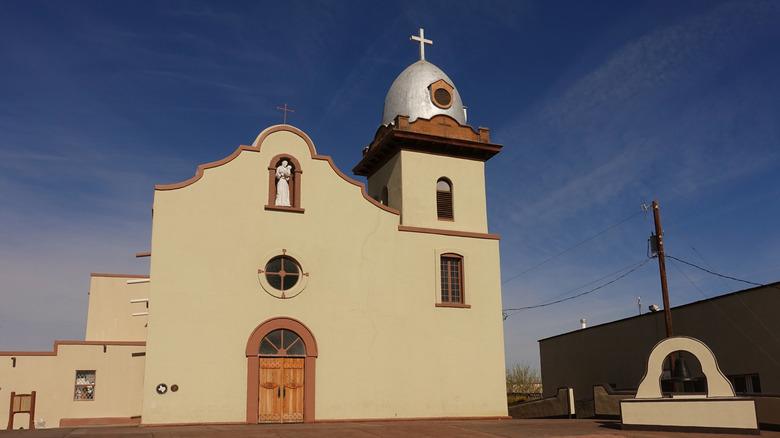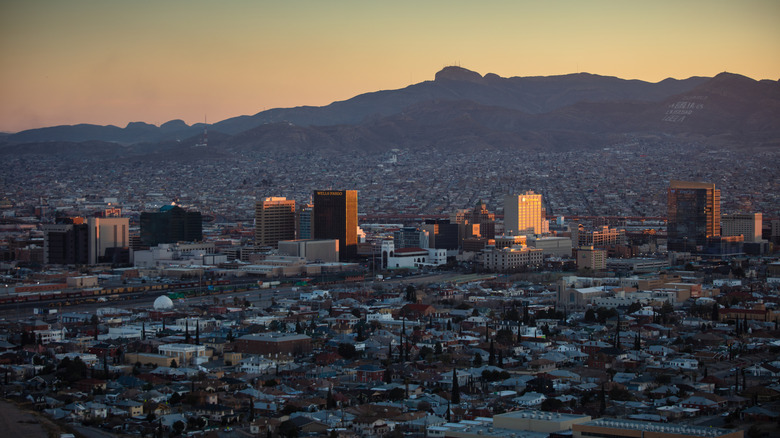One Of Texas' Oldest Towns Is A Forgotten Gem Hidden In The El Paso Region With Timeless Southwestern Charm
There is a certain magic that can only be found in border towns, as if an invisible river flows through their streets. Carrying news, events, and a transient flow of travelers, these currents help to shape an identity that is both fluid as it is rich in stories that wash up unto its figurative shores. It is of little surprise then to find that on the banks of the legendary Rio Grande bordering Mexico, sits the town of Ysleta, Texas, fitting the exact profile of such a place.
Not only is Ysleta arguably the oldest town within Texas' boundaries, it is also one of the oldest European settlements in the present-day Lone Star state. Founded both by Spanish missionary fathers as well as the Tigua Indians who followed to escape the Pueblo Revolt, this forgotten gem holds almost four centuries in its cornerstone, founded in 1680. Ever since its inception, the town's colorful tapestry of European, Indigenous, and Tejano cultures have shaped it into a bright and unique community known for its vibrant character.
A true cornucopia of Southwestern heritage, cuisine, festivities, and tradition, Ysleta stands out as a highlight on the outskirts of its bigger brother, the city of El Paso, which annexed the town in 1955. Located only a 20 minute drive south along the Mexican border from downtown El Paso, the town of Ysleta is an excellent addition of culture before heading out into the awe-inspiring outdoors for a classic Texas road trip. Visit the Ysleta Del Sur Pueblo Cultural Center Museum to learn about the Tigua Indians and their fundamental role in the shaping of Ysleta's history. Scout some of the most authentic Tex-Mex restaurants in the area, and join in on one of the local festivals that can be enjoyed year round.
A town built on cultural crossroads
To understand Ysleta's identity, one must appreciate the inextricably rich mix of cultures that shaped it. Beginning with its name, Ysleta is Spanish for "little island", and was thus named after the original settlement of the Tigua Indigenous People of Isleta, New Mexico. Being a Christianized tribe, they fled the troubled Pueblo revolts in their native land, when fellow tribes rose up against the Spanish rulers and banished them for 12 years. On the shores of the Rio Grande they would build a new home, where they remain to this day.
Today, Ysleta is recognized as being one of the most vibrant small towns known for its melting pot heritage, and a part of a network of the oldest towns in Texas to preserve its unique identities. Now, nestled between a mix of modern buildings and old adobe architecture, life is buzzing along its streets with markets and festivals. Near the Ysleta Mission church on Alameda Avenue, you can find the Ysleta Art and Farmers Market that is open every Saturday from 9 a.m to 3 p.m. It is a wonderful opportunity to familiarize yourself with the community and local treats from June 18 to Oct. 1.
Further south, located on 305 Yaya Lane, you can find the Ysleta del Sur Pueblo Cultural Center. Housed in a traditional sand-colored adobe building, it serves as a communal hub for the Tigua people. With a rich events calendar and museum, it also offers space for tribal members to sell authentic Tigua attire and artifacts. They are open daily from 10 a.m to 4 p.m.
Southwestern charm on the border
Like the rest of El Paso's metropolitan area, Ysleta shares its border town culture with its neighbor across the Rio Grande, Ciudad Juarez. After all, they used to be one and the same, with the original settlement being located at the Guadalupe Mission where Ciudad Juarez stands today. To delve deeper into how interwoven the fabric of the town is, embarking on the Mission Trail, stretching nine miles along Socorro Road is highly encouraged. Together, it connects three of the oldest continuously operated missions in the United States. These missions are deeply engrained in the community's psyche, and are part of the historic trail dating back to its inception in the 17th century, the Camino Real de Tierra Adentro.
If you head down further south of Ysleta in search of border adventure and lore, you will be pleasantly surprised at what lies ahead. Following the above-mentioned Socorro Road, you will end up passing through Texas's safest city and another historic hub that doubles as an artist colony. It seems that this section of Texas, only a 20-minute drive away from the closest major airport, El Paso International, has no shortage of hidden gems.
Should you find yourself seeking shade from a hot Texan sun and in need of refreshment, La Tapatia restaurant offers an excellent locale off the main artery of Alameda Avenue. Located at 8941 Old County Dr., it is currently celebrating 75 years of service, with more than 700 reviews for an average of 4.3 stars at the time of writing. After visiting the local museums, churches and Tigua cultural centers, this stop marks a high point during your visit to this historic slice of Texan heritage.


